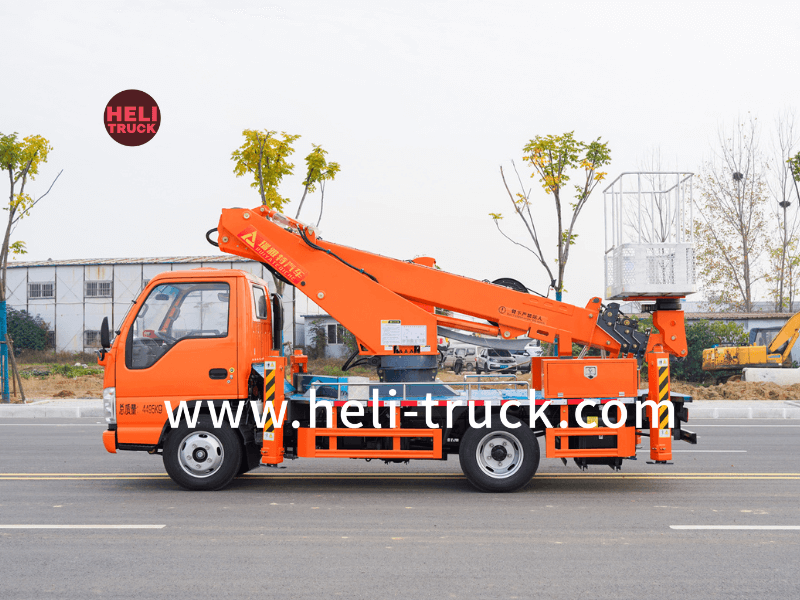Introduction
In times of disaster, whether natural or man-made, an efficient and effective waste management system is crucial for the recovery process. Garbage compactor trucks play a vital role in disaster recovery efforts by helping to clear debris, manage waste, and maintain sanitation in affected areas. These specialized vehicles are designed to compact and transport large volumes of waste material, making them indispensable assets in the aftermath of a disaster. This article explores the significance of garbage compactor trucks in disaster recovery operations and highlights their key features, benefits, and utilization strategies.
Understanding the Role of Garbage Compactor Trucks in Disaster Recovery
Disasters such as earthquakes, hurricanes, floods, and wildfires can leave behind a trail of destruction, including debris, rubble, and hazardous waste. The prompt removal and disposal of this waste are essential for restoring normalcy and ensuring the safety of affected communities. Garbage compactor trucks are specifically designed to handle the collection, compaction, and transportation of various types of waste, making them invaluable tools in disaster recovery efforts.
One of the primary functions of garbage compactor trucks in disaster recovery is debris clearance. These vehicles are equipped with powerful compaction mechanisms that can compress large volumes of debris into manageable loads, facilitating efficient removal and disposal. By clearing debris quickly and effectively, compactor trucks help to open up access routes, clear streets, and create space for emergency response and recovery activities.
Moreover, garbage compactor trucks play a crucial role in maintaining sanitation and hygiene in disaster-affected areas. The accumulation of waste can pose serious health risks, including the spread of diseases and contamination of water sources. By collecting and compacting waste material, compactor trucks help to prevent environmental pollution and mitigate public health hazards, ensuring a safer and cleaner environment for residents and responders alike.
Key Features and Benefits of Garbage Compactor Trucks
Garbage compactor trucks are specially designed vehicles that offer a range of features and benefits that make them ideal for disaster recovery operations. Some of the key features of these trucks include:
1. Compaction Mechanism: Garbage compactor trucks are equipped with hydraulic or mechanical compaction systems that can compress waste material, reducing its volume and increasing the truck's carrying capacity. This enables the vehicles to transport larger quantities of waste more efficiently, minimizing the number of trips required for disposal.
2. Sealed Containers: Compactor trucks are typically fitted with sealed containers or compactors that prevent odors, leaks, and spillage during transportation. This feature is essential for maintaining hygiene and preventing the spread of contaminants in disaster-affected areas.
3. Versatile Design: Garbage compactor trucks come in various sizes and configurations to suit different operational requirements. From small compactors for urban areas to large rear-loading trucks for rural regions, these vehicles can be tailored to meet specific needs and challenges in disaster recovery scenarios.
4. Durability and Reliability: Garbage compactor trucks are built to withstand rugged conditions and heavy-duty use. Their robust construction, reinforced body, and reliable components ensure long-lasting performance in demanding environments, making them dependable assets in disaster response and recovery operations.
The benefits of using garbage compactor trucks in disaster recovery efforts are manifold. Some of the key advantages include:
1. Improved Efficiency: By compacting and transporting waste material in larger quantities, compactor trucks help to streamline the waste management process, reducing the time, resources, and manpower required for cleanup and disposal activities.
2. Cost-Effectiveness: The efficient operation of garbage compactor trucks translates into cost savings for disaster response agencies and local authorities. By maximizing payload capacity and minimizing transportation overheads, these vehicles offer a cost-effective solution for waste management in disaster-affected areas.
3. Environmental Sustainability: Garbage compactor trucks promote environmental sustainability by reducing the volume of waste sent to landfills or incinerators. The compaction process helps to optimize landfill space and minimize the carbon footprint associated with waste transportation and disposal.

Utilization Strategies for Garbage Compactor Truck s in Disaster Recovery
To maximize the effectiveness of garbage compactor trucks in disaster recovery operations, it is essential to implement strategic utilization strategies that leverage the capabilities of these vehicles. Some of the key strategies for deploying compactor trucks in disaster-affected areas include:
1. Prioritizing Debris Clearance: In the immediate aftermath of a disaster, prioritizing debris clearance is essential to ensure access for emergency responders and facilitate recovery efforts. Garbage compactor trucks should be deployed to clear major thoroughfares, public spaces, and critical infrastructure to expedite the restoration process.
2. Establishing Waste Collection Points: Setting up designated waste collection points in disaster-affected areas can help centralize the disposal process and streamline waste management operations. Garbage compactor trucks can be deployed to collect waste from these points, ensuring efficient collection and disposal of debris and waste material.
3. Collaborating with Local Authorities: Close collaboration with local authorities, waste management agencies, and disaster response organizations is crucial for coordinating the deployment of garbage compactor trucks in disaster recovery efforts. By working together and sharing resources, expertise, and information, stakeholders can optimize the use of compactor trucks and enhance the overall efficiency of waste management operations.
4. Implementing Recycling and Resource Recovery: In addition to waste disposal, garbage compactor trucks can also support recycling and resource recovery initiatives in disaster-affected areas. By segregating recyclable materials and organic waste, these vehicles can help reduce the environmental impact of disasters and promote sustainable waste management practices.
Conclusion
Garbage compactor trucks are indispensable assets in disaster recovery operations, offering a reliable and efficient solution for waste management and debris clearance in the aftermath of a disaster. With their powerful compaction mechanisms, sealed containers, versatile design, and cost-effective operation, these specialized vehicles play a vital role in maintaining sanitation, hygiene, and environmental sustainability in disaster-affected areas. By implementing strategic utilization strategies and collaborating with local authorities and stakeholders, compactor trucks can significantly enhance the effectiveness and efficiency of waste management efforts in disaster recovery scenarios. As we continue to face the challenges of natural and man-made disasters, the importance of garbage compactor trucks in facilitating recovery and rebuilding efforts cannot be overstated.
